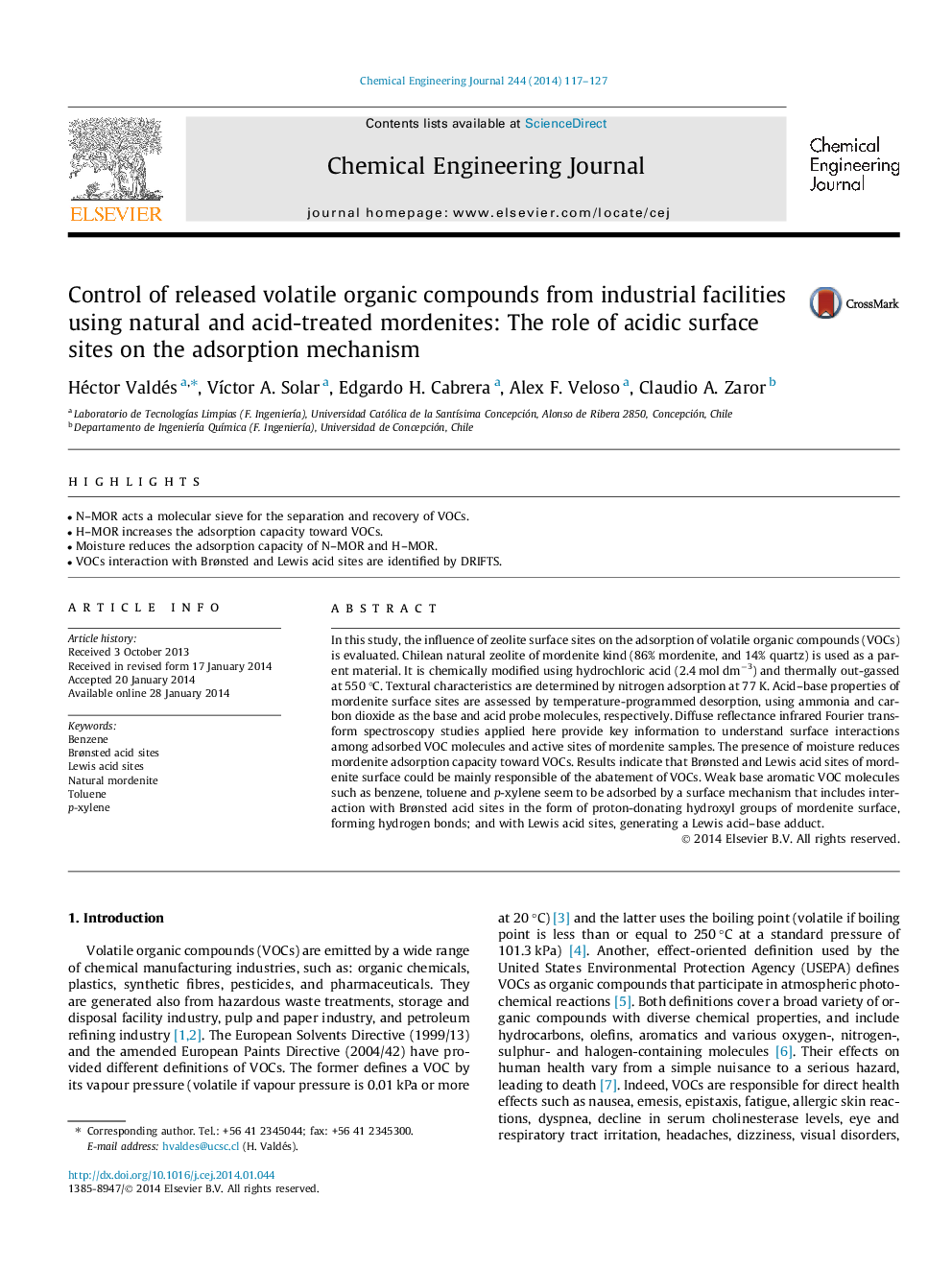| Article ID | Journal | Published Year | Pages | File Type |
|---|---|---|---|---|
| 147752 | Chemical Engineering Journal | 2014 | 11 Pages |
•N–MOR acts a molecular sieve for the separation and recovery of VOCs.•H–MOR increases the adsorption capacity toward VOCs.•Moisture reduces the adsorption capacity of N–MOR and H–MOR.•VOCs interaction with Brønsted and Lewis acid sites are identified by DRIFTS.
In this study, the influence of zeolite surface sites on the adsorption of volatile organic compounds (VOCs) is evaluated. Chilean natural zeolite of mordenite kind (86% mordenite, and 14% quartz) is used as a parent material. It is chemically modified using hydrochloric acid (2.4 mol dm−3) and thermally out-gassed at 550 °C. Textural characteristics are determined by nitrogen adsorption at 77 K. Acid–base properties of mordenite surface sites are assessed by temperature-programmed desorption, using ammonia and carbon dioxide as the base and acid probe molecules, respectively. Diffuse reflectance infrared Fourier transform spectroscopy studies applied here provide key information to understand surface interactions among adsorbed VOC molecules and active sites of mordenite samples. The presence of moisture reduces mordenite adsorption capacity toward VOCs. Results indicate that Brønsted and Lewis acid sites of mordenite surface could be mainly responsible of the abatement of VOCs. Weak base aromatic VOC molecules such as benzene, toluene and p-xylene seem to be adsorbed by a surface mechanism that includes interaction with Brønsted acid sites in the form of proton-donating hydroxyl groups of mordenite surface, forming hydrogen bonds; and with Lewis acid sites, generating a Lewis acid–base adduct.
